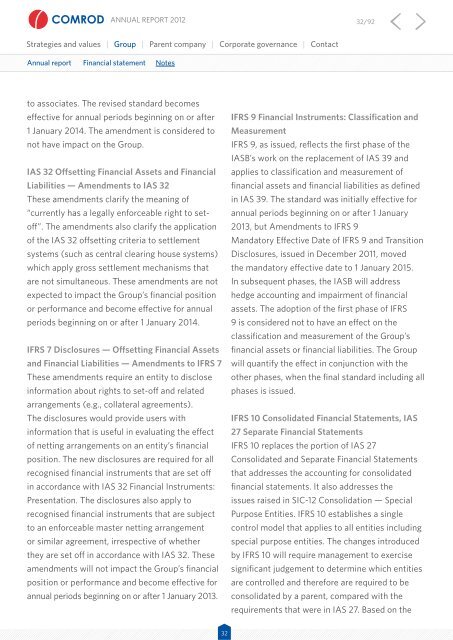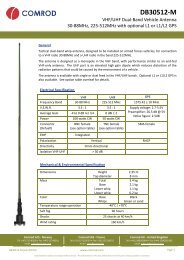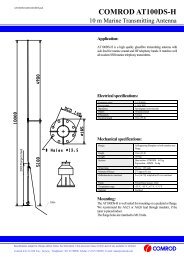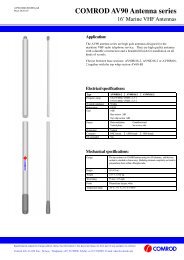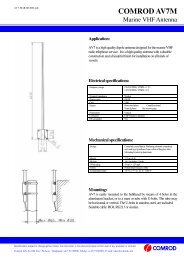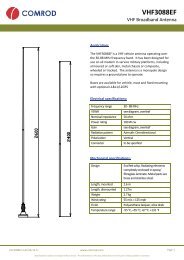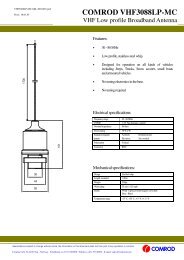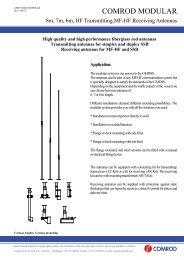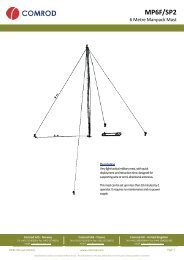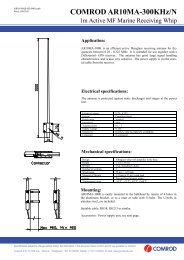Annual report 2012 - Comrod
Annual report 2012 - Comrod
Annual report 2012 - Comrod
Create successful ePaper yourself
Turn your PDF publications into a flip-book with our unique Google optimized e-Paper software.
<strong>Annual</strong> <strong>report</strong> <strong>2012</strong> 32/92Strategies and values | Group | Parent company | Corporate governance | Contact<strong>Annual</strong> <strong>report</strong> Financial statement Notesto associates. The revised standard becomeseffective for annual periods beginning on or after1 January 2014. The amendment is considered tonot have impact on the Group.IAS 32 Offsetting Financial Assets and FinancialLiabilities — Amendments to IAS 32These amendments clarify the meaning of“currently has a legally enforceable right to setoff”.The amendments also clarify the applicationof the IAS 32 offsetting criteria to settlementsystems (such as central clearing house systems)which apply gross settlement mechanisms thatare not simultaneous. These amendments are notexpected to impact the Group’s financial positionor performance and become effective for annualperiods beginning on or after 1 January 2014.IFRS 7 Disclosures — Offsetting Financial Assetsand Financial Liabilities — Amendments to IFRS 7These amendments require an entity to discloseinformation about rights to set-off and relatedarrangements (e.g., collateral agreements).The disclosures would provide users withinformation that is useful in evaluating the effectof netting arrangements on an entity’s financialposition. The new disclosures are required for allrecognised financial instruments that are set offin accordance with IAS 32 Financial Instruments:Presentation. The disclosures also apply torecognised financial instruments that are subjectto an enforceable master netting arrangementor similar agreement, irrespective of whetherthey are set off in accordance with IAS 32. Theseamendments will not impact the Group’s financialposition or performance and become effective forannual periods beginning on or after 1 January 2013.IFRS 9 Financial Instruments: Classification andMeasurementIFRS 9, as issued, reflects the first phase of theIASB’s work on the replacement of IAS 39 andapplies to classification and measurement offinancial assets and financial liabilities as definedin IAS 39. The standard was initially effective forannual periods beginning on or after 1 January2013, but Amendments to IFRS 9Mandatory Effective Date of IFRS 9 and TransitionDisclosures, issued in December 2011, movedthe mandatory effective date to 1 January 2015.In subsequent phases, the IASB will addresshedge accounting and impairment of financialassets. The adoption of the first phase of IFRS9 is considered not to have an effect on theclassification and measurement of the Group’sfinancial assets or financial liabilities. The Groupwill quantify the effect in conjunction with theother phases, when the final standard including allphases is issued.IFRS 10 Consolidated Financial Statements, IAS27 Separate Financial StatementsIFRS 10 replaces the portion of IAS 27Consolidated and Separate Financial Statementsthat addresses the accounting for consolidatedfinancial statements. It also addresses theissues raised in SIC-12 Consolidation — SpecialPurpose Entities. IFRS 10 establishes a singlecontrol model that applies to all entities includingspecial purpose entities. The changes introducedby IFRS 10 will require management to exercisesignificant judgement to determine which entitiesare controlled and therefore are required to beconsolidated by a parent, compared with therequirements that were in IAS 27. Based on the32


